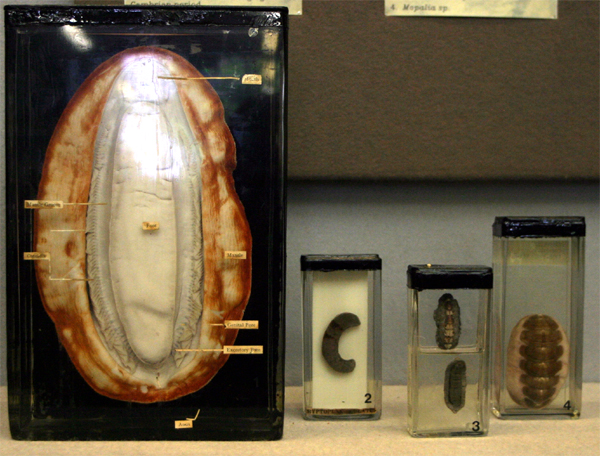
CLASS POLYPLACOPHORA | |
Chitons are highly adapted for adhering to rocks and shells, where they feed on algae. The head is indistinct without eyes or tentacles. The mantle is heavy and the foot is broad and flat with a girdle to facilitate adhesion to hard substrates. A low profile reduces resistance to water. The most distinctive feature of a chiton is its shell. Divided into eight overlapping, articulating plates, it both protects the body and allows it to fold and stick tight on angular surfaces. The poorly developed head, nature of the shell, multiple gills and lack of a veliger larva suggest that chitons diverged quite early form the main line of molluscan evolution. There are approximately 500 existing species and some 350 known fossil chitons, the earliest belonging to the Cambrian period.
|
 |






